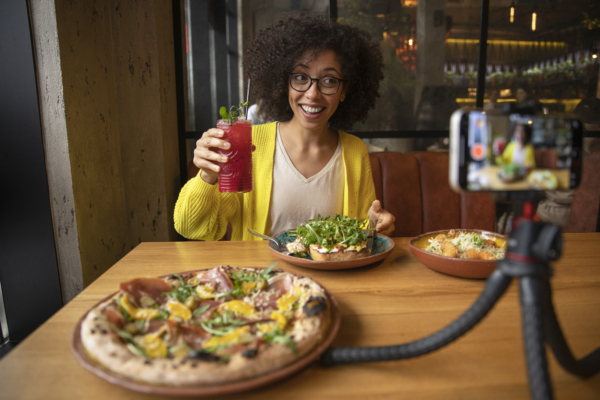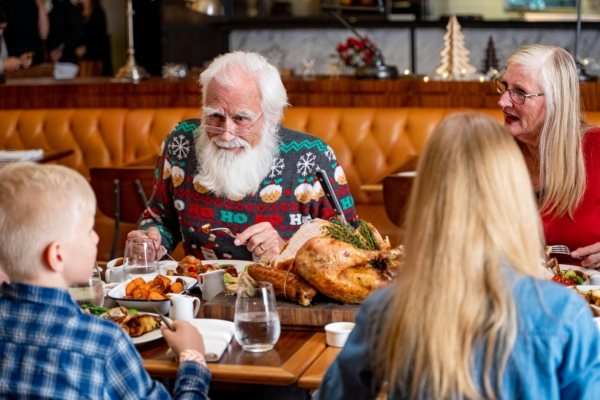SEO for Restaurants: A Beginner’s Guide to Increase Clicks and Get More Orders
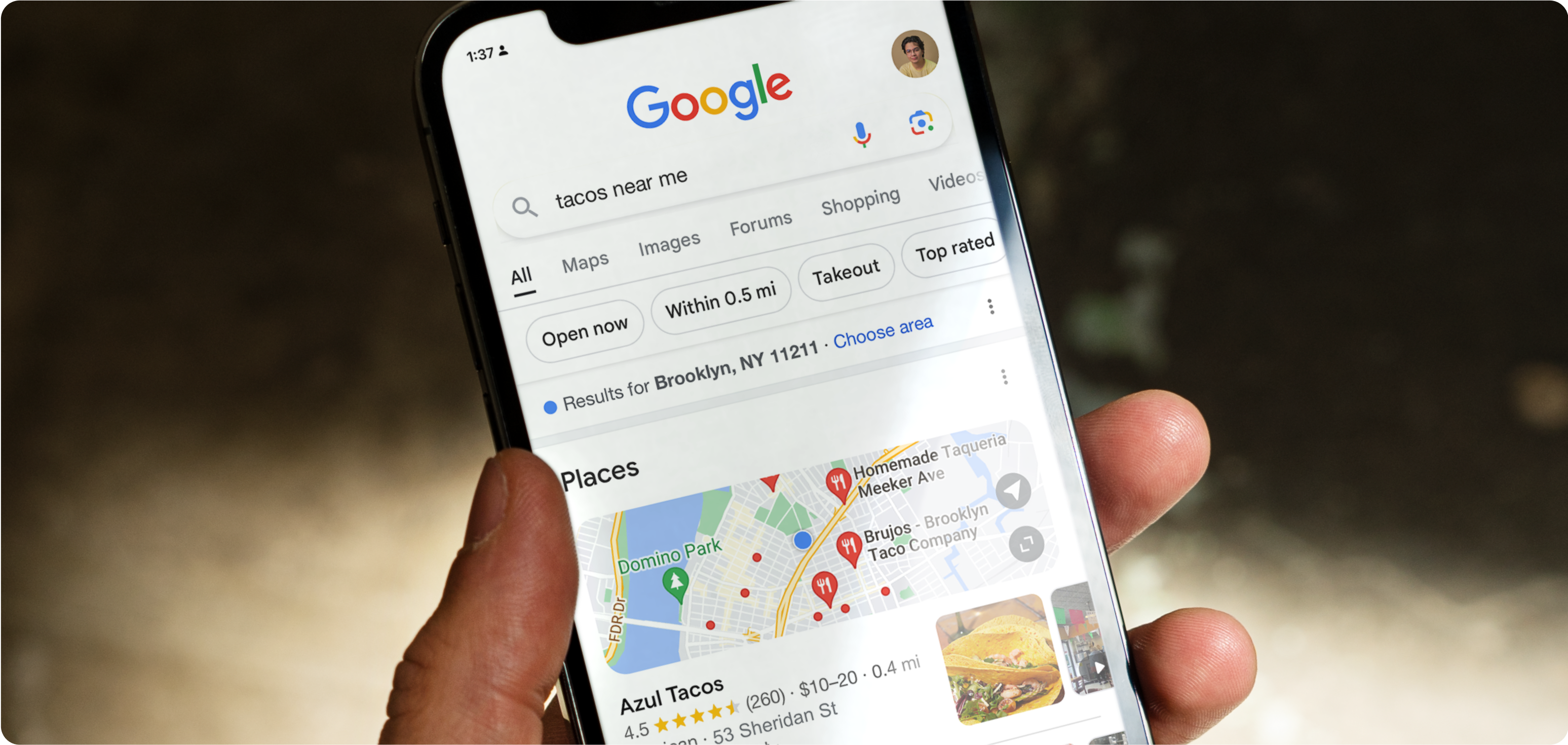
This is a beginner’s guide to improving your restaurant website SEO, providing everything you need to know to boost your online presence.
In this guide:
- Learn how to show up on Google when locals search for restaurants like yours.
- Get simple restaurant SEO tips to boost online orders, reservations, and foot traffic—no tech skills needed.
- Make your website faster, easier to use, and mobile-friendly to keep diners engaged.
- Discover how to optimize your Google Business Profile and Maps listings so more people find you.
- See real-world tips to build trust, earn more reviews, and stand out from competitors.
Running your own restaurant requires much more than meets the eye. Aside from making sure everything is up and running properly and customers are happy, owning and operating a restaurant often means you work as your own marketing machine, and oftentimes, you have to get creative. That’s where search engine optimization for restaurants comes in and can be incredibly important.
SEO for restaurants can feel incredibly technical and overwhelming, especially if it’s new to you, but this beginner’s guide will help you get started.
Key takeaways
- Most diners find restaurants through Google.
- A fast, mobile-friendly site helps you rank higher.
- Use keywords like your cuisine and location.
- Backlinks from local sites build trust with Google.
- Track what’s working and update your site often.
What is SEO?
SEO, or Search Engine Optimization, is the practice of using a combination of relevant keywords, clear descriptions, linking, and headings to enhance a website’s visibility and ranking on search engine result pages.
It involves optimizing your content and website structure to help your restaurant’s site rank higher in search results on Google and other search engines.
Implementing restaurant SEO strategy practices often drives more visitors to the business’ website, which ultimately brings more foot traffic to the restaurant itself.
Why is SEO for Restaurants so Important?
Less than 1% of people searching for a restaurant click on the second page of Google results, according to Toast. Rather, they flock to the first result that comes up.
Implementing a strong SEO strategy for your restaurant can help bring in more customers, improve your restaurant’s digital footprint and build a strong online presence, helping you stay competitive and relevant.

Specific benefits of SEO for restaurants include:
1) More Website Traffic and Increased Online Orders
When people look for a place to eat, they often use their phones or computers to research. Customers typically browse restaurant menus and images online before deciding where to go.
In fact, 62% of people use Google to research restaurants, making search visibility crucial for your restaurant’s success.
A strong restaurant SEO strategy helps your restaurant appear at the top of search results, making it easier for customers to find you and ensuring your restaurant is easily found by potential customers searching online.
With 66% of adults more likely to order takeout than before COVID-19, ensuring your restaurant is visible online is more important than ever.
2) Improve Customer Satisfaction
SEO is about more than search engines. It’s also about improving your website to make it more user-friendly and accessible for diners. Providing a great user experience through faster load times, a mobile-friendly design, and easy navigation not only boosts customer satisfaction but also positively impacts your SEO.
3) Competitive Edge
SEO helps your restaurant stand out from the competition, which there is plenty of. When you have a well-optimized website, you can attract more customers than your competitors who neglect SEO.
More importantly, 77% of diners check a restaurant’s website before deciding where to eat.
To gain a further edge, restaurant owners should compare their website’s SEO performance and rankings with competitors to identify areas for improvement.
4) Saving on Expensive Marketing
SEO is a cost-effective marketing strategy. Once your website is optimized, it continues to attract organic traffic, saving you money on traditional, often pricey, advertising.
It focuses on long-term, unpaid growth, making it ideal for restaurants wanting to maximize marketing without overspending.
Better SEO drives more customers to your restaurant, increasing sales and boosting your online presence..
5) Building Trust and Credibility with Potential Customers
High rankings in search results build trust and credibility. People tend to see top-ranked businesses as more reputable and reliable.
Maintaining consistent and accurate information, including your restaurant’s details, across platforms such as Google Maps and your website signals reliability to both customers and search engines.
It will help your restaurant business attract more customers while boosting your online presence and helping you stay competitive in a crowded market. To achieve this, it’s important to understand how to optimize your restaurant’s SEO effectively.
How to Start Optimizing SEO for Restaurants
1) Enhance and optimize your restaurant website’s SEO
To improve your restaurant’s SEO, follow these simple steps:
- Use relevant keywords in your page titles, descriptions, and website content. This helps search engines connect your site to what potential customers are searching for.
- Optimize each page for page SEO. Each page should be clear, focused, and provide valuable information to visitors, while implementing on-page SEO techniques.
- Keep your website content updated with blogs and menu changes. Fresh website content signals to search engines that your site is active and relevant, which is important for SEO.
- Use clear alternative text for images, including your restaurant name in the description. This improves accessibility and helps search engines index your visuals more effectively.
- Make online ordering easy to find and use on your website. A simple ordering process boosts sales,customer satisfaction and grows your online orders..
Adding an online ordering system to your website can enhance user engagement and improve SEO.Restaurants with integrated systems like Yolk, a family-run breakfast and brunch chain in Chicago, earn 358% more revenue.
View this post on Instagram
2) Focus on keyword research
To improve your restaurant’s SEO, focus on keywords related to your cuisine, location, and specialties.
Use local phrases like “Mexican restaurant in Cambridge” and include specific dishes and unique offerings naturally in your website and menu content. It’s also important to include specific terms that potential customers might use in their searches, as these can help your restaurant appear in more relevant results and improve discoverability.
3) Make sure your website is optimized for local search
Local SEO ensures your restaurant appears when nearby customers search for places to eat or specific cuisines.
Creating a dedicated section on your website for location, contact, or menu information can help improve local SEO. For more tips visit our guide on local SEO for restaurants.
4) Optimize your Google Business Profile for Google Search
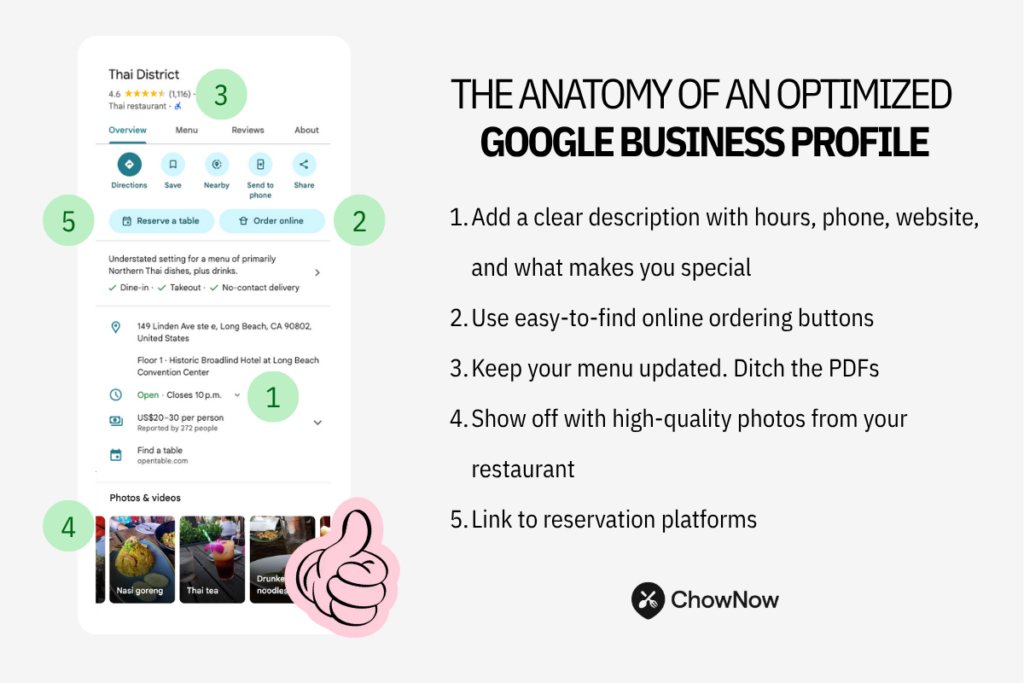
Your Google Business Profile plays a key role in your visibility and attracting customers by driving traffic to your restaurant.
To optimize it:
- Write a clear, detailed description including your hours, phone number, website, and what your restaurant offers. This helps answer customers’ questions upfront.
- Make online ordering easy with clear buttons and consistent info across all platforms.
- Make sure your menu is easy to find and always up to date. Avoid PDFs; use HTML menus instead for better SEO and user experience.
- Upload high-quality photos from your restaurant to attract potential diners.
- Integrate reservation systems to offer seamless booking, improve local SEO, and boost visibility.
5) Make Sure Customers Can Find You on Google Maps
Optimizing your restaurant’s Google Maps listing helps attract local customers. Make sure your restaurant hours, address, phone number, and website are accurate and current.
Add quality photos of your food, dining area, and staff to make your listing attractive. Encourage customers to share their own photos for authenticity.
Keep your listing updated with special offers, events, or seasonal menus to engage customers and increase foot traffic.

6) Lean on social media for more traffic
Social media boosts your restaurant’s SEO by driving more website traffic.
Use platforms like Facebook, Instagram, and TikTok to increase visitors and engagement.
Your social profiles also show up in search results, giving customers more ways to find you.
Regular engagement (likes, shares, and comments) with your audience builds brand awareness and customer loyalty, supporting your SEO efforts. Growing your followers on social media sites like Facebook, Instagram, TikTok and X (formerly Twitter) increases your brand visibility and drives more traffic to your website.
If managing your restaurant’s SEO strategy feels overwhelming, ChowNow can help you get started. Our restaurant websites are built using premium Squarespace templates that have built-in SEO tools and are optimized to drive online orders.
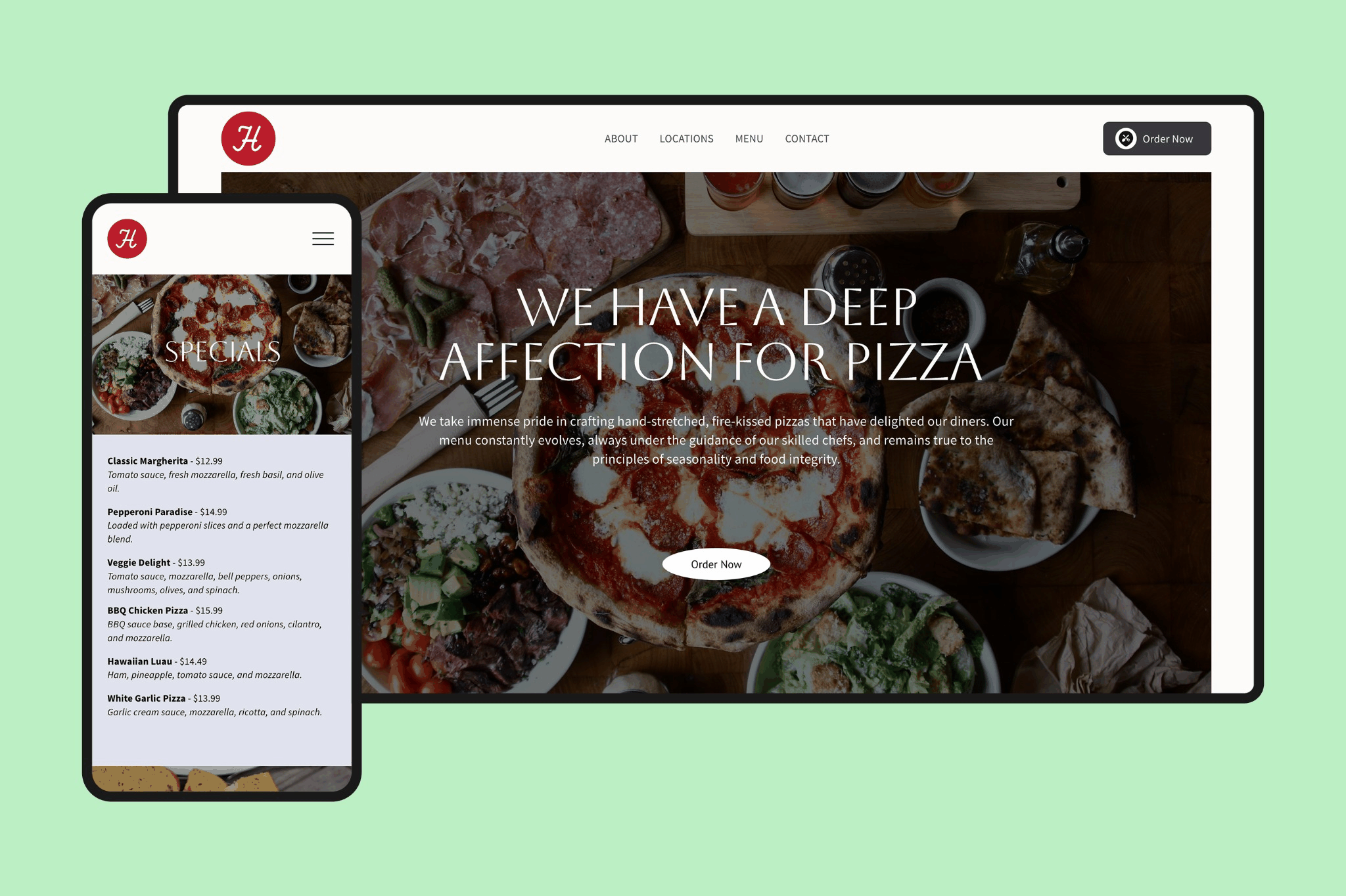
Plus, our discovery network of ordering channels gets your restaurant listed on numerous high-traffic sites, like Google, Apple Maps, and Yelp, making it easier for customers to find you through local searches and place an order.
You’ve Got SEO Ready, Now What?
1) Make Your Website Mobile Friendly for All Devices
Most customers search for restaurants on their mobile device or computer, with 40% using Google to find new restaurants.
Over the years, the increasing use of mobile devices has made it essential to optimize your website for smartphones and tablets.
Ensuring your site is mobile-friendly and responsive improves both search visibility and user experience.
Adding features like an online ordering system can boost both search engine optimization and customer experience.
Since 66% of adults are more likely to order takeout now, having a visible and easy-to-use online ordering option is more important than ever.
2) Build Partnerships to Boost Your Restaurant’s Authority
Boost your restaurant’s credibility and online rankings by earning valuable backlinks from trusted sources like local bloggers, community groups, and event pages. Here’s how:
- Share unique content such as recipes, stories, or event updates to attract attention.
- Collaborate with nearby businesses for cross-promotions.
- Invite food bloggers and influencers to review your restaurant by offering meals or discounts in exchange for honest posts on Yelp and social media.
These partnerships expand your reach, build trust, and help new customers discover your restaurant.
View this post on Instagram
3) Create Valuable Content to Attract Diners
Regularly publish engaging, great content that highlights what makes your restaurant special. Creating great content not only attracts diners but also improves your SEO. Use relevant keywords like “Italian restaurant in Kansas City” to help potential customers find you.
Consider starting a blog with stories, seasonal menus, or chef interviews, and share these on social media to expand your reach and build loyalty.
4) Provide a Positive User Experience
Make your website easy to navigate with clear menus, quality images that appeal to customers’ eyes, and simple calls to action like “Order Online” or “Book a Table.” Appealing to people’s natural tendency to ‘eat with their eyes’ enhances engagement and attracts diners. A user-friendly site keeps visitors engaged and coming back, boosting your search rankings.
Add QR codes on tables or menus to make it easy for customers to leave reviews.
Ensure your site loads quickly and clearly shows key info like business hours, location, and contact details.
Focusing on a smooth, fast, and simple user experience keeps customers happy and improves your restaurant’s visibility online.
5) Encouraging Reviews
Encouraging customer reviews is key to improving your restaurant’s local SEO and attracting new diners. Positive reviews on Google and other review platforms boost your visibility and build trust.
Make it simple for guests to leave reviews by adding QR codes on tables, receipts, or menus.
Always respond quickly and professionally to all reviews to show you value customers and care about their experience. Active review management helps grow your reputation and business.
Remember to use the strategies mentioned earlier, such as making the review process easy and offering incentives, to maximize the number of customer reviews.
How to Know if Your Restaurant SEO is Improving
Monitoring your restaurant SEO is key to making sure your efforts pay off and keep you ahead of the competition.
By tracking the right metrics, you can ensure your SEO strategy is successful in improving rankings and attracting more customers. This allows you to make smart decisions to boost your online visibility and increase sales.
Why Track Local Rankings?
Keep an eye on how your restaurant ranks in search results across different locations and keywords.
Tools like Google Search Console and SEMrush help you see where you stand and spot opportunities for improvement. You can also use these tools to compare your restaurant’s rankings with those of competitors, helping you identify areas where you can optimize and gain an edge.
If rankings drop for certain keywords or areas, you can quickly update your website, promotions, or Google Maps listing to regain visibility.
What Metrics Matter?

Focus on these to measure your SEO success:
- Search Rankings: See how your site ranks for key search terms potential customers use.
- Website Traffic: Track visitors, page views, and bounce rates to understand engagement and popular pages.
- Online Reviews: Monitor reviews on Google and other platforms to gauge reputation and customer satisfaction.
Use Data to Improve
Regularly review your SEO performance to:
- Make your website easier to use and navigate.
- Optimize content with relevant keywords.
- Keep business info accurate and consistent everywhere.
- Encourage and respond to customer reviews.
- Update your Google Business Profile and Maps with fresh content and offers.
By staying proactive and data-driven, your restaurant will maintain strong digital presence, attract more local customers, and climb higher in search rankings over time. Continue to monitor and update your SEO strategies to ensure ongoing improvement.
Advanced SEO Tips for Restaurants
Ready to boost your restaurant’s SEO to the next level? Here are some advanced tips to help search engines better understand your website and attract more customers:
- Add schema markup to your site. This special code highlights key details like your menu, business hours, and location, making your listing more informative in search results.
- Use descriptive alt text for all images. This improves both search engine understanding and accessibility for users on any device.
- Create high-quality content such as blog posts, videos, or behind-the-scenes stories. This engages visitors and builds a loyal audience.
- Include specific dish keywords like the ones your customers are searching for in your homepage title and content to attract local searchers.
- Create dedicated pages for catering services to target catering-related searches and attract more potential customers.
- Ensure your website can handle increased traffic and customer inquiries that result from successful SEO and marketing campaigns.
By applying these strategies, you’ll improve your online visibility, drive more traffic, and attract more potential customers to your restaurant.
Restaurant SEO Frequently Asked Questions
Does SEO work for restaurants?
Yes, SEO works for restaurants. It’s one of the most effective ways to increase visibility online and attract more local customers.
Optimizing the restaurant’s website is a key part of a successful SEO strategy, helping to improve search rankings and draw in more potential diners.
With so many diners searching for places to eat on Google and other platforms, ranking higher in search results can directly lead to more website visits, walk-ins, online orders, and reservations.
What businesses need SEO the most?
Local, service-based businesses like restaurants benefit greatly from SEO.
Many restaurants have adopted online ordering and SEO strategies to stay competitive in the digital marketplace. When customers search for places to eat near them, Google prioritizes businesses with strong local SEO strategies, connecting restaurants with diners looking for a meal.
How long does it take for restaurant SEO to work?
SEO is a long-term strategy. You may start seeing results in a few weeks, but most restaurants notice significant improvements in traffic and rankings within 3-6 months.
What are some Local SEO strategies for restaurants?
Local SEO strategies include claiming and optimizing your Google Business Profile, using location-based keywords, ensuring your NAP (Name, Address, Phone number) is consistent across all platforms, and encouraging customer reviews. These help your restaurant show up in nearby search results when someone searches for “best [cuisine] near me.”
What’s the most important part of SEO for restaurants?
Local search optimization. Ensuring your restaurant shows up in searches for nearby places to eat, especially on Google Maps and Google Search, is the most valuable outcome of SEO. That’s why optimizing your Google Business Profile and using location-based keywords are essential.
Want to get listed on Google, Apple Maps, and Yelp—without the stress?
Let ChowNow do the heavy lifting. Talk to us about launching your SEO-ready website today.




